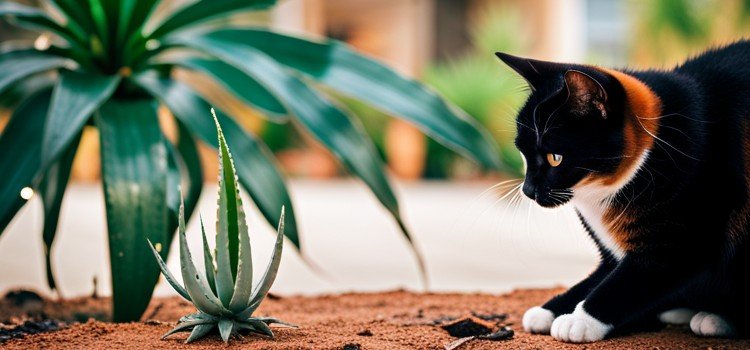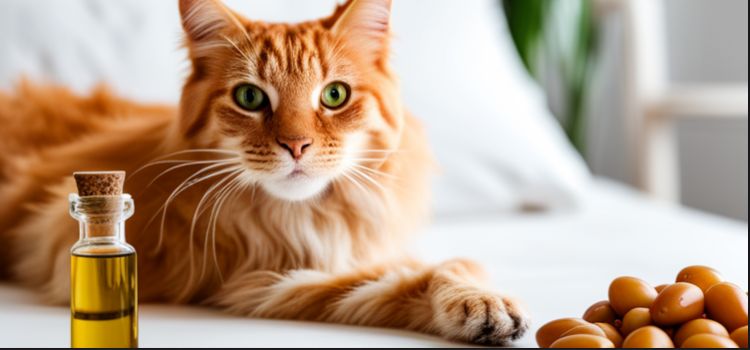As an Amazon Associate committed to the mission of improving the lives of our readers, Live-Clear.com receives a small commission from eligible purchases made through our affiliate links. This revenue enables us to keep producing insightful articles and other material.
Cats are beloved members of many households around the world. As responsible pet owners, we have to ensure their safety and well-being. One common concern among cat owners is the presence of certain plants and trees in their homes and gardens, and one such concern is the toxicity of cypress trees to cats. In this comprehensive guide, we will explore whether cypress is toxic to cats, the potential dangers it poses, and how to protect your feline friends.

What is Cypress and Its Varieties?
Cypress trees are evergreen conifers that belong to the Cupressaceae family. They are known for their height, slender trunks, and feathery foliage. Some common varieties of cypress trees include the Leyland cypress, Italian cypress, and Monterey cypress. These trees are often used in landscaping and for making hedges due to their elegant appearance and fast growth.
Is Cypress Toxic to Cats?
While cypress trees are not the most toxic plants for cats, they can still pose some risks. The foliage, seeds, and bark of some cypress species contain compounds that can be harmful to felines. These compounds are known as oleoresins, and they can lead to various health issues if ingested. Cats are naturally curious creatures and may chew on plants, so it’s essential to know if the cypress in your environment is a threat.
Identifying Cypress in Your Environment
It’s crucial to be able to identify cypress trees to ensure the safety of your cats. Cypress trees have certain distinctive features that set them apart from other plants:
- Needle-like leaves: Cypress trees have slender, needle-like leaves typically arranged in opposite pairs. These leaves are often green, but they can vary slightly in color depending on the specific cypress species.
- Cones: Cypress trees produce small, round cones about the size of a marble. These cones contain seeds, and they may be found on the tree or the ground beneath it.
- Aroma: Cypress trees emit a distinctive aroma, often described as slightly resinous or earthy. This aroma can help you identify them even if you can’t see the tree directly.
If you suspect that you have cypress trees in your environment and are concerned about their potential toxicity to your cat, it’s essential to take precautions. One precaution you can take is to keep your cat away from the fallen cones, as they may contain seeds that could be harmful if ingested. Additionally, it is advisable to consult with a veterinarian to determine if cypress trees pose any specific risks to your cat’s health.
Symptoms of Cypress Poisoning in Cats
Cypress toxicity can manifest in various ways if a cat ingests any part of the tree. Common symptoms of cypress poisoning in cats include:
- Vomiting: Cats may vomit shortly after ingesting cypress leaves or seeds. This is their natural way of expelling toxins from their system.
- Drooling: Excessive drooling indicates that your cat may have encountered a substance that irritates their mouth and throat.
- Diarrhea: Diarrhea is another typical gastrointestinal response to ingesting a toxic substance.
- Lethargy: Cats exposed to toxins may become lazy or weak. They might lose interest in playing and become unusually still.
- Loss of Appetite: If your cat refuses to eat or loses interest in food, it can be a symptom of cypress poisoning.
- Respiratory Issues: In severe cases, cats may experience breathing difficulties due to throat irritation or swelling.
- Gastrointestinal Distress: Some cats may experience more severe gastrointestinal issues, including abdominal pain and bloating.
If you notice these symptoms in your cat and suspect cypress exposure, it’s crucial to act promptly to minimize the potential harm. Contact your veterinarian immediately for guidance and bring your cat to a veterinary clinic for a thorough examination and treatment. Remember, early intervention can significantly improve the chances of a positive outcome for your cat’s health.
What to Do If Your Cat Ingests Cypress
If you suspect that your cat has ingested any part of a cypress tree or is displaying symptoms of cypress toxicity, follow these steps:
- Remove Your Cat from the Area: The first step is to get your cat away from the source of the potential poisoning. This can help prevent further ingestion.
- Contact Your Veterinarian: Call your veterinarian or an emergency pet hotline immediately. Describe what is going on as well as the symptoms that your cat is experiencing.
- Do Not Induce Vomiting: Unlike some toxins, inducing vomiting is not recommended in cases of cypress poisoning. It can worsen the irritation in the cat’s throat.
- Keep Your Cat Calm: Try to keep your cat calm and comfortable while waiting for medical assistance. Ensure they have access to water.
- Provide Information: Be ready to provide your veterinarian with information about the specific cypress variety involved and the time of ingestion.
- Follow Veterinary Advice: Your veterinarian will guide you on the next steps, which may include bringing your cat in for an examination and treatment.
Prompt action is crucial when dealing with potential poisonings, so don’t hesitate to seek professional help. Remember, time is of the essence when it comes to potential poisonings, so it’s important not to delay seeking professional help. Your veterinarian can provide guidance and treatment for your cat’s situation. Trust their expertise and follow their advice to ensure the best possible outcome for your furry friend.
Preventing Cypress Toxicity
Prevention is the key to keeping your cat safe from cypress toxicity. Here are some strategies to consider:
- Limit Access: If you have cypress trees in your garden, limit your cat’s access to them. Use barriers or fencing to keep your cat away from the trees.
- Train Your Cat: Train your cat to avoid certain areas or plants. Positive reinforcement techniques can be effective in discouraging undesirable behavior.
- Supervise Outdoor Time: When your cat is outside, keep a close eye on them to ensure they don’t come into contact with toxic plants.
- Consider Replacing Cypress: If you’re concerned about the safety of your cat, consider replacing cypress trees with cat-friendly plants or trees.
- Consult a Veterinarian: If you need more clarification about the safety of plants in your home or garden, consult with your veterinarian or a pet-safe plant expert for guidance.
Remember that prevention is always better than treatment regarding your cat’s health and safety. Taking proactive measures to create a safe environment for your cat is crucial. Besides removing toxic plants, it’s also important to keep household chemicals and medications securely stored and inaccessible to your feline friend. Additionally, providing plenty of engaging toys and scratching posts can help redirect their attention away from potentially harmful substances.
Cat-Friendly Alternatives to Cypress
If you want to maintain a lush, green environment in your garden or home but are concerned about cypress toxicity, there are plenty of cat-friendly alternatives. These plants are non-toxic to cats and can add beauty to your space without harming you. Some cat-friendly options include:
- Catnip (Nepeta cataria): Catnip is not only safe for cats but also a favorite among many felines. They are attracted to its scent and may play with or nibble on the plant.
- Cat Grass (Dactylis glomerata): Cat grass is safe for cats and provides them with a source of fiber, which can help with digestion.
- Spider Plant (Chlorophytum comosum): Spider plants are known for their air-purifying qualities and are non-toxic to cats.
- African Violet (Saintpaulia): African violets are colorful and safe for cats, making them an excellent addition to your home.
- Rosemary (Rosmarinus officinalis): Rosemary is not only safe but can also add a delightful aroma to your garden.
- Bamboo (Bambusoideae): Bamboo is a safe and low-maintenance plant that can enhance the aesthetics of your home.
By choosing these cat-friendly alternatives, you can create a safe and pleasant environment for your cat. These plants not only provide a visually appealing atmosphere but also contribute to the overall well-being of your feline companion. Additionally, incorporating these cat-friendly alternatives can help prevent potential harm or toxicity from other common household plants.

Conclusion
Cypress trees can be potentially toxic to cats, and it’s crucial to be aware of their risks. By understanding the symptoms of cypress poisoning and taking preventive measures, you can help ensure the safety and well-being of your feline companions. Consider cat-friendly alternatives to cypress to create a harmonious living environment where your cats can thrive without unnecessary risks. Always consult your veterinarian for personalized guidance and advice on keeping your cats safe and healthy.
Frequently Asked Questions (FAQ)
Cypress trees can be potentially toxic to cats. It’s best to limit your cat’s access to these trees and provide safe alternatives in your home and garden.
If your cat has ingested cypress and displays poisoning symptoms, contact your veterinarian immediately. Do not induce vomiting alone, and keep your cat calm while waiting for professional help.
Not all cypress species are equally toxic. The level of toxicity can vary, so it’s essential to consult with a veterinarian or expert if you need clarification on the specific cypress variety in your environment.
Training your cat to avoid cypress trees can be done through positive reinforcement techniques. Reward your cat when they steer clear of the trees, and use deterrents if necessary.
There are several cat-friendly plants and trees, including catnip, cat grass, spider plants, African violets, rosemary, and bamboo, that you can consider instead of cypress.
Cypress trees can be toxic to cats, and prevention is crucial to ensure their safety. To limit access to cypress trees, use barriers or fencing, train your cat to avoid certain areas or plants, supervise outdoor time, consider replacing cypress trees with cat-friendly plants, and consult a veterinarian for guidance. Prevention is always better than treatment, and removing toxic plants, keeping household chemicals and medications securely stored, and providing engaging toys can help redirect cats’ attention away from harmful substances.
Amazon and the Amazon logo are trademarks of Amazon.com, Inc, or its affiliates.



